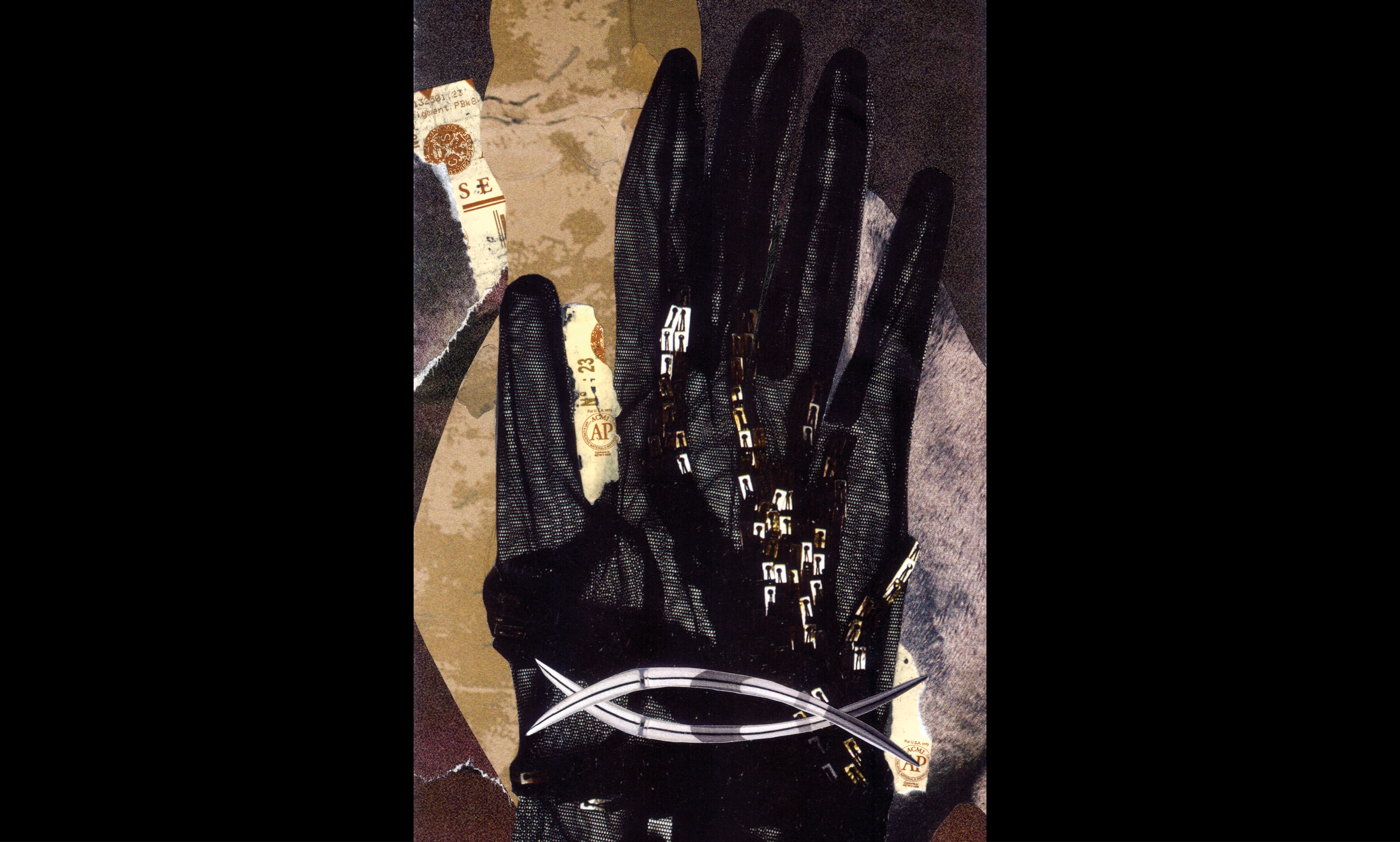The Surgical Innovations Lab at the UMKC School of Medicine, led by Gary Sutkin, M.D., was formed in 2016 to better understand how patient safety may be threatened in the operating room and how to make surgery safer. It approaches this mission with an inter-disciplinary team through a multitude of methodologies, including biomedical engineering, ethnography and now art.
A member of Sutkin’s team is Margaret Brommelsiek, Ph.D., associate research professor in the School of Nursing and Health Studies and the School of Medicine. Together, they are collaborating on an art and medicine project called Visual Excavation: Reconstructing Scientific Data into Visual Artifacts.
It was designed to extend the lab’s research data through visualization in the form of artist books. Brommelsiek, who is also a practicing artist, developed the images through mining data contained in the lab’s research protocols relating to quality and safety in the operating room, team communication and interprofessional surgical team interactions.
The importance of the artwork is being recognized by the artistic community as a whole. Brommelsiek and Sutkin have created five books consisting of the pieces accompanied with poems written by Sutkin and Brommelsiek. Those books are now included in the library of the National Museum of Women in Art in Washington, D.C. The institution is the only major museum in the world solely dedicated to championing women through the arts. The library’s collection includes 1,000 unique books and limited editions created by women artists in a variety of formats.
“It’s really an honor to be included in their collection and how artists and art can engage in science,” said Brommelsiek. “Hopefully, these books will inspire other future artists to collaborate in fields outside of the arts.”
By going beyond charts and graphs, Brommelsiek’s art provides a visual narrative documenting the lived experiences of the researchers. Conducting ethnographic studies, her research examines the dynamics within the operating room environment, using a humanities-informed lens and identifying parallels between medicine and art. Her finished pieces, which she describes as abstract, use collage as the primary medium to create an essence of the experiences of research processes.
“Margaret’s art and background have really opened up a window in my mind where I view my research differently and even surgery itself,” said Sutkin, who also serves as associate dean of women’s health at the School of Medicine.
According to Sutkin, this is the lab’s first foray into true art incorporation. “We’ve been making theoretical models and try to make them visual, but this is a new direction for us.”
Much of Sutkin’s research focuses on the use of a trocar, an intimidating surgical instrument used during bladder surgeries where the wrong amount of pressure can lead to dire consequences in female patients. These procedures often require working without visual cues. Through the lab, Sutkin has been able to create a surgical model that mirrors this procedure by mapping pressure used during trocar insertion. An important part of this research was having access to a cadaver.
“I wanted to really capture Dr. Sutkin’s visceral experience of the cadaver,” said Brommelsiek. “The textures, the way the surgeon’s hands were crucial, as well as the instrument itself, even the mesh that is used in the surgeries. It’s not literal, but the essence is captured in the imagery.”
This project took shape when they received funding through the KU Medical Center Frontiers Trailblazer Awards. The program provides financial support to assist with targeted research in a variety of areas of health care.
We thought it would be interesting to take three aspects of our research that had differing perspectives and extend the research data to a visual form,” said Brommelsiek. “How could we visually see the output of the research process and find meaning through a visual lens of expression?”
The backbone of their creative process is conversations around science, but also other fields of shared interest including art, philosophy, literature, films and, of course, health care. It is through this ongoing dialogue that several research protocols have emerged.
“We’ll be discussing some of the science in our research but we’ll also touch on film, visual art or novels that have a relationship to what we’re doing,” said Brommelsiek. “It all feeds into our creative process and how our research is developed.”

